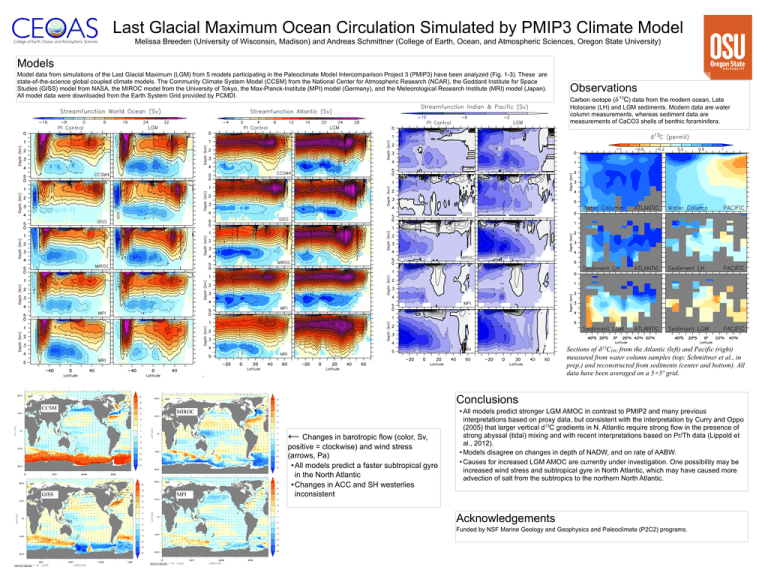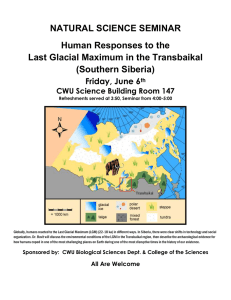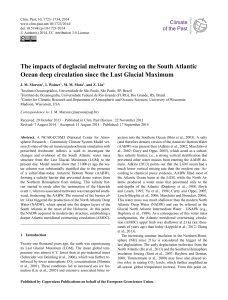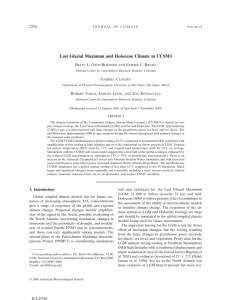Models Observations Conclusions Acknowledgements
advertisement

Last Glacial Maximum Ocean Circulation Simulated by PMIP3 Climate Model Melissa Breeden (University of Wisconsin, Madison) and Andreas Schmittner (College of Earth, Ocean, and Atmospheric Sciences, Oregon State University) Models Model data from simulations of the Last Glacial Maximum (LGM) from 5 models participating in the Paleoclimate Model Intercomparison Project 3 (PMIP3) have been analyzed (Fig. 1-3). These are state-of-the-science global coupled climate models. The Community Climate System Model (CCSM) from the National Center for Atmospheric Research (NCAR), the Goddard Institute for Space Studies (GISS) model from NASA, the MIROC model from the University of Tokyo, the Max-Planck-Institute (MPI) model (Germany), and the Meteorological Research Institute (MRI) model (Japan). All model data were downloaded from the Earth System Grid provided by PCMDI. Observations Carbon isotope (δ 13C) data from the modern ocean, Late Holocene (LH) and LGM sediments. Modern data are water column measurements, whereas sediment data are measurements of CaCO3 shells of benthic foraminifera. Sections of δ CDIC from the Atlantic (left) and Pacific (right) measured from water column samples (top; Schmittner et al., in prep.) and reconstructed from sediments (center and bottom). All data have been averaged on a 5×5º grid. 13 . CCSM Conclusions MIROC ← Changes in barotropic flow (color, Sv, GISS MPI positive = clockwise) and wind stress (arrows, Pa) •All models predict a faster subtropical gyre in the North Atlantic •Changes in ACC and SH westerlies inconsistent • All models predict stronger LGM AMOC in contrast to PMIP2 and many previous interpretations based on proxy data, but consistent with the interpretation by Curry and Oppo 13 (2005) that larger vertical d C gradients in N. Atlantic require strong flow in the presence of strong abyssal (tidal) mixing and with recent interpretations based on Pr/Th data (Lippold et al., 2012). • Models disagree on changes in depth of NADW, and on rate of AABW. • Causes for increased LGM AMOC are currently under investigation. One possibility may be increased wind stress and subtropical gyre in North Atlantic, which may have caused more advection of salt from the subtropics to the northern North Atlantic. Acknowledgements Funded by NSF Marine Geology and Geophysics and Paleoclimate (P2C2) programs.






